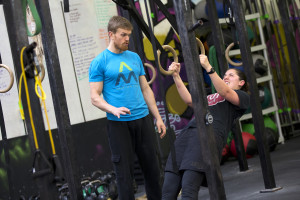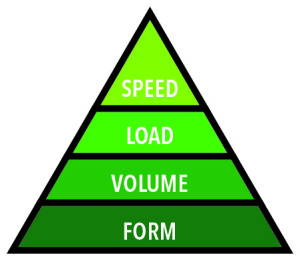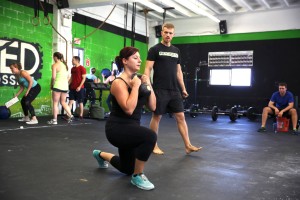Fitness can be taught so many ways that you’d waste hours listing all the methods you could take towards improving it. The biggest fallacy, in my opinion, is that more is better, faster is better, and heavier is better. When we emphasize more, we automatically stop thinking about doing less (call this recovery). When we go fast, we throw mindfulness and exactness out the window (call this conscious moving). When heavier is the only thing we measure fitness gains, we assume that we are above the lighter weights (call this ego). And at the end of the day, the question stays the same; does more work, done at higher speeds and heavier loads transfer to better and improved fitness?
Begin breaking down what fitness means to you. Do you want to get stronger? Are you more interested in improving endurance? Does the ability to do work and recover faster equate physically fit to you? Or is this only a guess as what it means to get fitter? However way you define it, lets agree that we want to be more well rounded. We want to be functional, capable, and confident approaching any task. Conditioned, strong, pliable, explosive, and balanced- this is the fit athlete. Free to access wide ranges of joint mobility without falling into locking patterns (i.e.; hyperextended knees or elbows) and being able to demonstrate active breathing in dynamic and static positions. Able to understand neuromuscular firing as well as spatial awareness. A truly fit person is the jack of all trades and master of many.
Having said this, it is not easy to get this fit. It involves exercising those muscles like will power, discipline, and patience. Additionally– if you take the approach of dialing into where you’re at, you’ll have a MUCH easier time figuring out how to get where you want to be (the next level fitness). Think about it, our bodies are incredibly smart, however they are also very lazy. The body typically wants to figure things out using as little brain power and energy expenditure as possible. To tap into precision, accuracy, and your own kinesthetic awareness it takes time and effort. However, if you can master what I had a coach tell me once, “visualize to utilize,” you’re going to become a well conditioned machine. To visualize is to see your body doing the work, and to utilize is to make work. Taking the time to understand how certain training or exercises have negative impacts on your body versus positive ones could be THE missing link in your quest for constant improvement in health and fitness. For this reason I’ve outlined a way to look at and reevaluate your training time at the gym. This way you can make sure you’re being productive, efficient, and progressing!
First– EVALUATE. Leave no stone unturned. Get with your coach and have them look at your athletic positions from all angles. Get as much information from the assessment to better understand what you need to do to get better. Look for compensations in movements, dysfunctional patterns, and check in with breathing mechanics. After that move on to movements, either under load or with resistance. Find where you’re weakest, search for positions that you struggle to do, and get the best idea of where you’re at with your body.
Second– APPLY. Assign specific exercises to your workout routine. I’m not talking about just doing group classes and calling it a day. This leads to plateaus and injuries more often than not. Use your coach to diagnose areas you’re struggling with and outline your approach towards addressing them. Everybody has foundations they need to work on, and it takes a custom training plan from your coach. Get with them, put in the work, take action to see the improvement.
Third– SUSTAIN. Slow down, strengthen your imbalances, show that you can stick to a plan. If you have any desire to get better, whether from a cardiovascular point of view or a strength view, you have got to do the extra exercises your coach assigns you. Your body will only adapt and change if you sustain the new workout plan you’re taking on.
Fourth– EXPAND. As you progress expand your reach to new areas in your training. Take on new challenges, monitor your progress, constantly seek and see improvements in your body and health. Avoid plateauing at all costs. Expanding can only happen when the previous three steps have been followed, otherwise you’re in for an injury or a plateau.
There you have it, a way to EASE into better fitness. Make it a priority to break the pattern of moving out of habit and instead focus on moving intentionally. When you get your brain to move more consciously you’ll start to access a lot more of your deeper muscles and be able to move from a more stable place. More, faster, heavier does not equate fitter. There is a time, and a place, to train in that energy system, but most people only need to do enough to maintain what they have. If you start addressing what you don’t have, such as rage of motion, pliable tissue, well developed core, by following the above steps, you’ll end up accelerating your growth and fitness potential. But it will only come from looking at the bigger picture of what’s going on in your training.



